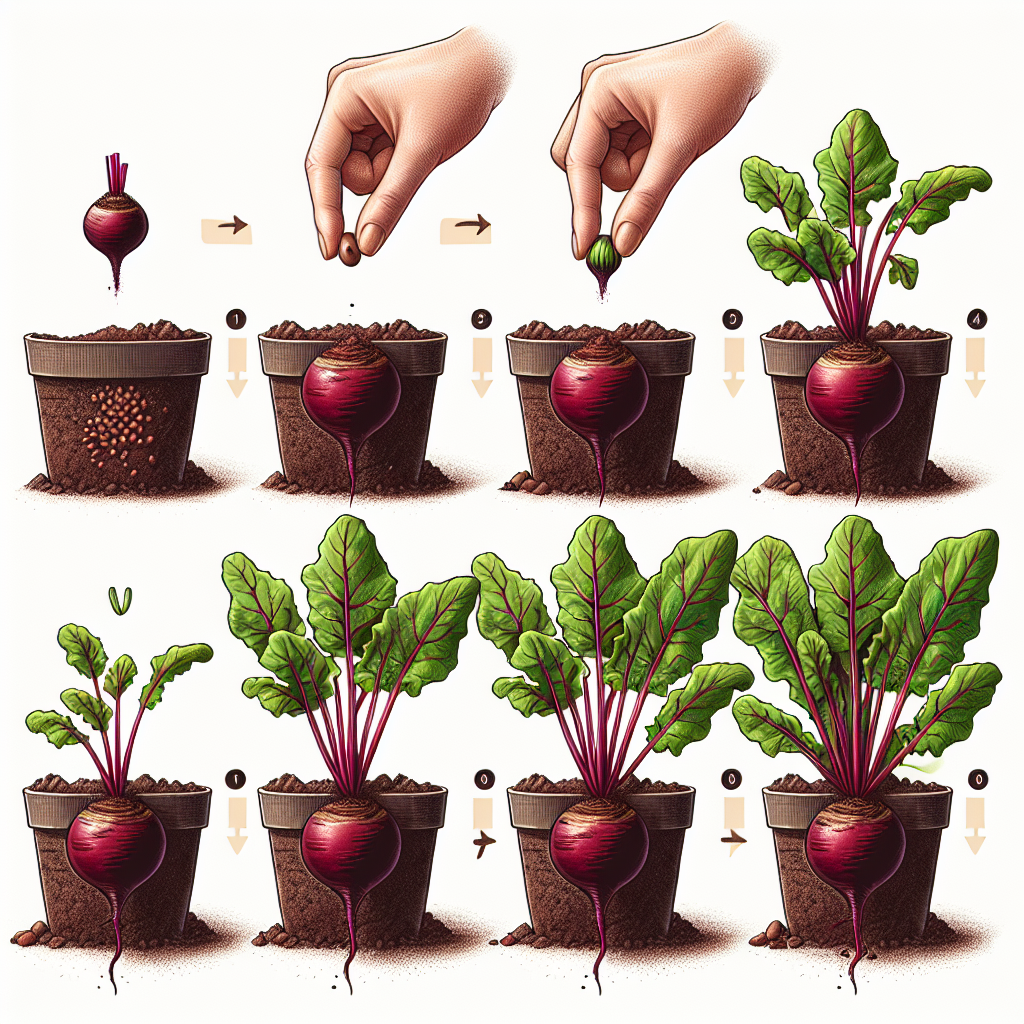
Beetroot how to grow from seed
Beetroot: The Superfood from Seed to Plate
Beetroot, often simply referred to as beets, is a nutritional powerhouse that has gained popularity in recent years. Whether you are using them in salads, smoothies, or as a side dish, they offer a plethora of health benefits. Growing your own beetroot can be incredibly rewarding and there’s nothing quite like the taste of homegrown produce. In this article, we will delve into **beetroot how to grow from seed**, exploring everything from soil preparation to harvesting, ensuring you have all the information you need to cultivate this vibrant vegetable in your own garden.
Why Choose Beetroot?
Before we dive into the specifics of cultivation, let's explore why you might want to choose beetroot for your garden:
- Rich in Nutrients: Beetroot is packed with vitamins A, B, and C, and minerals such as iron and magnesium.
- Versatile Culinary Use: Beets can be roasted, boiled, juiced, or eaten raw.
- Easy to Grow: They are an excellent choice for beginner gardeners.
- Beautiful Color: The rich purple color of beetroot can enhance the visual appeal of your garden.
Getting Started: Choosing the Right Seeds
When it comes to planting beetroot, selecting the right seeds is critical. Here’s what to consider:
- Non-GMO Seeds: Always opt for non-genetically modified seeds to ensure healthy growth.
- Heirloom Varieties: Heirloom beetroot varieties are often tastier and can yield better flavor.
- Seed Suppliers: Purchase your seeds from reputable suppliers, ensuring high germination rates.
Soil Preparation: Setting the Stage for Growth
Beetroot thrives in well-draining, nutrient-rich soil. Here’s how to prepare your soil for optimal growth:
- Soil Type: Choose sandy loam or loamy soil for the best results.
- pH Level: Aim for a pH level between 6.0 and 7.0 for ideal conditions.
- Composting: Mix in well-rotted compost or organic matter to enrich your soil.
- Tilling: Loosen the soil to a depth of at least 12 inches to promote root development.
Creating the Perfect Environment
In addition to soil quality, consider the following factors to create a thriving environment for your beetroot:
- Sunlight: Beets prefer full sun, so choose a location that receives at least 6 to 8 hours of sunlight daily.
- Watering: Keep the soil consistently moist but not waterlogged.
- Spacing: Ensure adequate space between seeds to allow for proper growth; spacing them 2-3 inches apart is ideal.
Planting Your Beetroot Seeds
Understanding **beetroot how to grow from seed** includes knowing the best practices for planting. Follow these steps for effective planting:
- Timing: Sow seeds in early spring or late summer, depending on your climate.
- Planting Depth: Plant each seed about 1 inch deep.
- Row Spacing: Space rows about 12-18 inches apart to allow for easy access later in the growing season.
Care and Maintenance
Once your seeds are planted, ongoing care is essential for healthy beetroot growth. Here are key strategies:
Watering
During dry spells, beets require consistent moisture. Watering deeply once a week is often sufficient, but monitor soil moisture regularly.
Fertilizing
About four weeks after planting, you can apply a balanced fertilizer to encourage robust growth. Liquid fertilizers can be beneficial for a quick nutrient boost.
Weed Control
Weed growth can compete with your beetroot for nutrients. Keep the area around your plants free from weeds, but be careful not to disturb the roots of your beets when weeding.
Pest and Disease Management
Beetroot can be susceptible to various pests and diseases. Here are some tips to protect your plants:
- Aphids: Use insecticidal soap or neem oil to control aphid populations.
- Fungal Diseases: Ensure good airflow around plants and avoid overhead watering to minimize fungal issues.
- Beet Leafminer: Remove affected leaves promptly to reduce spread.
Harvesting Your Beetroot
Knowing when to harvest is as important as the growing process itself. Here’s how to determine when your beetroot is ready:
Signs of Maturity
Typically, beets are ready to harvest 50-70 days after planting, depending on the variety. Look for the following signs:
- Size: The bulb should be about the size of a golf ball.
- Top Color: Bright green tops indicate healthy growth.
- Texture: A firm root often signifies readiness.
Harvesting Technique
When harvesting, gently loosen the soil around the beetroot with a fork before pulling them out to reduce damage.
Storing Your Harvest
Once harvested, proper storage techniques will extend the lifespan of your beetroot:
- Trimming Greens: Trim off the leaves, leaving about one inch of the stem to prevent moisture loss.
- Cool Storage: Store beets in a cool, dark place; ideally, in a root cellar or refrigerator.
- Avoid Wetness: Ensure your beets are dry before storing to prevent rot.
Conclusion
With the information outlined above, you are now equipped to embark on your **beetroot how to grow from seed** journey. By following the steps provided, you can enjoy the satisfaction of growing your own delicious, vibrant beetroot right from your backyard.
As you nurture these nutritious vegetables, you’ll be not only cultivating your garden but also a deeper connection to healthful eating and sustainable living. Happy gardening!
By Guest, Published on August 8th, 2024